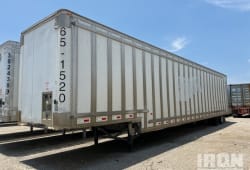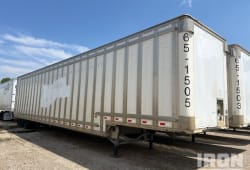Construction Aggregates- Building Blocks of Construction
8 Lectura mínima
)
octubre 16, 2023
Construction aggregates are a collection of granular materials, such as sand, gravel, crushed stone, and recycled concrete, used extensively in the construction industry. These materials serve as the foundation for various construction projects, providing strength, stability, and durability to building materials like concrete and asphalt. They are crucial for enhancing the properties of these materials and reinforcing them, contributing to the structural integrity of infrastructure. In this detailed post, we'll delve into the various important aspects of Construction Aggregates, including its working, different types, importance, where its used, and beyond.
How Does It Work: Strengthening Building Materials
Construction aggregates, integral to the construction industry, play a pivotal role in strengthening various building materials. Primarily, they enhance the performance of two fundamental materials: concrete and asphalt. In concrete production, aggregates act as a vital component, filling the gaps between cement particles, which serves to reduce shrinkage and the likelihood of cracking. This reinforcement is most important to ensure the longevity and structural integrity of various construction projects, from buildings to infrastructure.
In the case of asphalt, aggregates are similarly important. They improve the material's strength and enhance its resistance to the wear and tear inflicted by vehicular traffic and environmental factors, resulting in more durable and cost-effective road surfaces. This aspect of aggregates significantly contributes to the efficiency and longevity of roads, making them a crucial element in infrastructure development.
Different Types: Versatility in Construction
They come in various forms, each tailored to specific project needs. They each have their unique characteristics and applications. Sand, fine-grained and easily workable, is essential in the production of concrete and mortar, ensuring the cohesion and stability of these materials. Gravel, with its coarser texture, is incredibly versatile and finds use in various concrete applications, offering both structural support and durability. Crushed stone, sourced from hard rock, becomes a fundamental component of many construction materials, enhancing their strength and longevity. Recycled aggregates, generated from demolished concrete, not only contribute to sustainable practices but also promote recycling in the construction industry. Slag aggregates, derived from various industrial processes, offer cost-effective and environmentally friendly solutions in construction applications. Finally, marine aggregates, extracted from seabeds, play a crucial role in coastal protection and land reclamation projects, preserving shorelines and enabling land expansion.
Where It Is Used: Supporting Diverse Sectors
Aggregates serve as the cornerstone of various sectors, playing a foundational role in critical infrastructure like roads, bridges, railways, airports, and ports, where they provide stability and support for heavy transportation and traffic loads, forming the basis of modern transportation networks. Within the construction sector, aggregates are employed in constructing buildings, foundations, and various structural elements, augmenting these structures with strength and durability. Transportation applications, including runways and road surfaces, heavily rely on aggregates to endure the demands of heavy vehicles and challenging weather conditions, ensuring safe and efficient travel. Drainage systems harness aggregates to manage water efficiently, ensuring proper water flow and averting flooding. In landscaping endeavors, aggregates enhance outdoor spaces by creating both aesthetically pleasing and practical surfaces in gardens, parks, and recreational areas. Finally, sports fields depend on aggregates for stability and safety, delivering an even and dependable playing surface for a diverse range of sports and events.
Importance: Strengthening Structures and Fostering Growth
:format(webp))
They play a pivotal role in the construction industry, with their contributions including:
Bolstering Strength and Resilience: Aggregates reinforce construction materials, enhancing their structural integrity and durability. This, in turn, ensures that buildings, roads, and other infrastructure withstand the test of time and the stresses they face.
Providing Cost-Effective Solutions: Aggregates offer a cost-effective means to meet the diverse demands of construction. Their wide availability and versatility make them an economically efficient choice for various applications.
Embracing Sustainability: In the age of environmental consciousness, aggregates contribute to sustainable practices. The use of recycled concrete and eco-friendly substitutes helps reduce the environmental footprint of construction activities.
Adapting to Diverse Needs: Aggregates can be tailored to specific construction needs by varying their size, shape, and composition. This adaptability ensures they meet the unique requirements of each project.
Ensuring Stability and Safety: The role of aggregates in maintaining the stability and safety of infrastructure projects is paramount. They form the foundation of secure and reliable structures.
Fostering Global Growth: The construction industry, driven by the availability and use of aggregates, plays a central role in global development and progress. It provides the vital infrastructure required for economic growth, urbanization, and improved living standards across the world. Aggregates are, therefore, a cornerstone of fostering growth and prosperity on a global scale.
Environmental Impact: A Growing Concern
The widespread use of aggregates has raised environmental concerns. Extraction, transportation, and processing of aggregates can have significant environmental impacts, including habitat disruption, noise pollution, dust emissions, and water pollution. Quarrying activities often displace native flora and fauna, replacing them with industrial infrastructure, leading to ecological imbalances.
Noise pollution from heavy machinery and transportation vehicles at quarry sites can negatively affect nearby communities and wildlife habitats. Dust emissions pose a health risk to workers and local residents and can damage nearby ecosystems. Chemicals used in aggregate processing can leach into surrounding water bodies, potentially harming aquatic life and water quality.
However, the industry is increasingly adopting responsible and sustainable practices to mitigate these environmental impacts. These measures include efficient dust control techniques, noise-reduction strategies, and comprehensive reclamation plans to restore quarried areas to their natural state once extraction is complete. Advanced water management methods help prevent contamination, ensuring that the environmental footprint of rock quarries is minimized as much as possible. The industry's commitment to reducing its environmental impact is growing, as it seeks to balance the demand for valuable rock resources with the imperative to protect the environment for future generations.
Safety for Construction Aggregates
The construction industry involves heavy machinery, excavation, transportation, and processing of materials, which inherently carry risks. Ensuring the well-being of workers, the protection of the environment, and the safety of neighboring communities is a critical concern.
The operation of heavy machinery, like bulldozers and crushers, poses inherent dangers. Operators must be well-trained and follow stringent safety protocols to prevent accidents. Protective gear, such as helmets, safety glasses, and ear protection, is essential for minimizing potential hazards. Safety measures and emergency procedures must be ingrained in the workforce's knowledge to respond to any unforeseen events promptly.
Blasting, a common practice in some aggregate operations, requires careful planning and execution to prevent accidents and environmental harm. Proper drilling techniques, precise timing, and monitoring are essential to maintain safety standards. Dust and noise pollution are also common byproducts of quarry activities, and their mitigation is essential to preserve the health and well-being of nearby communities and wildlife.
Comprehensive reclamation plans are necessary to restore quarried areas to their natural state once extraction is complete. Additionally, advanced water management techniques help prevent contamination, ensuring that the environmental footprint of rock quarries is minimized as much as possible.
By strictly adhering to safety measures and continuously improving practices, the aggregates industry of construction aims to provide a secure working environment, mitigate environmental impacts, and maintain a commitment to safety and sustainability.
Job Scope in Construction aggregates
Construction aggregates industry offers a wide range of job opportunities across various sectors. It provides employment prospects for professionals with diverse skills and backgrounds, contributing significantly to local economies. Geologists play a crucial role in assessing geological formations, helping identify valuable aggregate resources and ensuring their sustainable extraction. Heavy equipment operators are responsible for the management of quarry machinery, including bulldozers, excavators, and crushers. Truck drivers are essential for transporting extracted materials, ensuring a steady flow of resources to construction sites and production facilities. The industry also supports maintenance technicians who keep the machinery in optimal working condition, as well as administrative staff responsible for the smooth operation of the business. These roles not only offer stable employment but also generate income and stimulate economic growth in the regions where these quarries are situated. Therefore, the construction aggregates sector plays a significant role in fostering job security and economic vitality, providing a wide range of employment opportunities essential for local and regional development.
Future of Aggregates: Sustainable and Technological Advancements
The future of aggregates will likely involve a greater focus on environmentally responsible practices, technological advancements in extraction and production, and a continued commitment to providing the essential materials that underpin the infrastructure of modern society. Sourcing aggregates sustainably, recycling materials, and developing eco-friendly substitutes are emerging trends in response to environmental concerns.
Final Note
In conclusion, construction aggregates, often overshadowed by more prominent elements of the construction industry, are the elements that make modern architecture and infrastructure possible. Understanding their role, diverse types, and crucial importance ensures the construction industry continues to grow sustainably, economically, and securely.

Post acquisition of Boom & Bucket, the company he founded, Adam now leads Marketplace Growth for Ritchie Bros.










